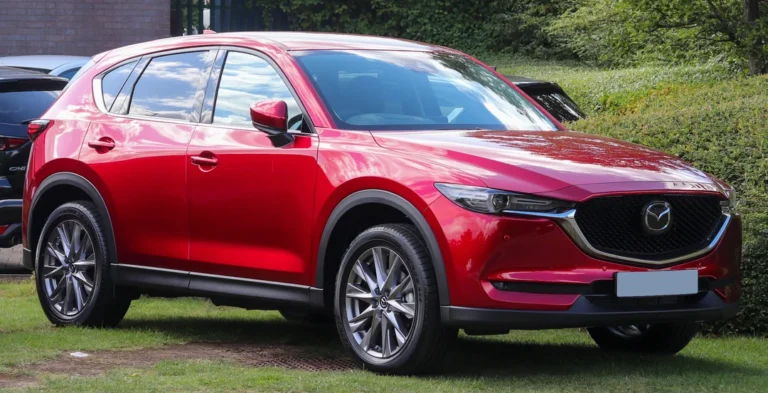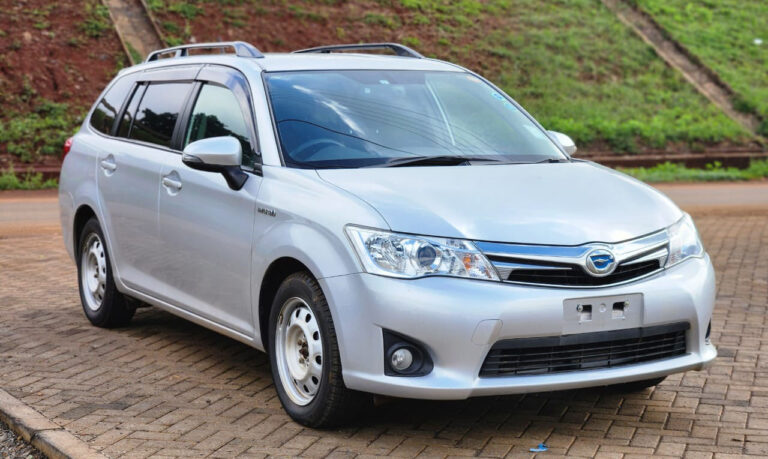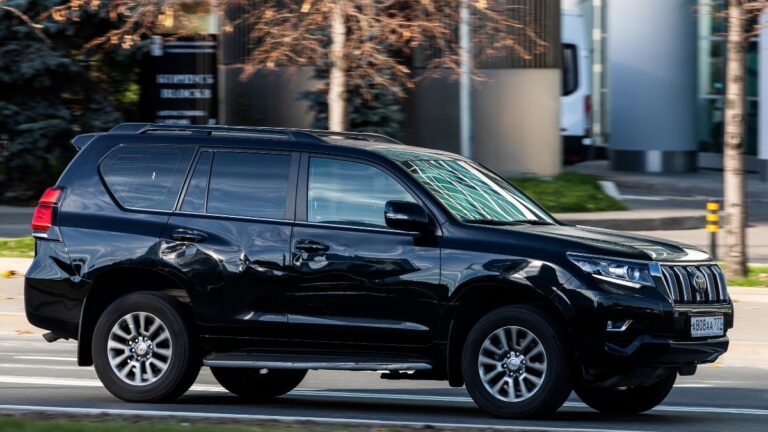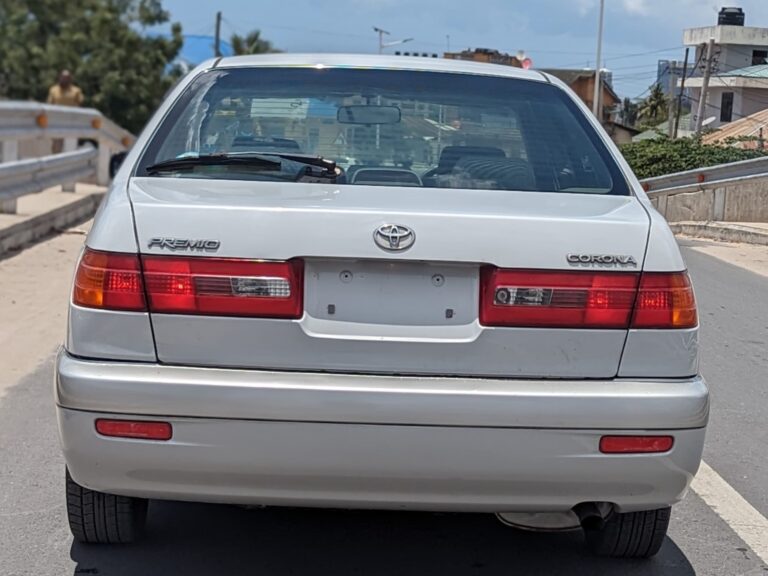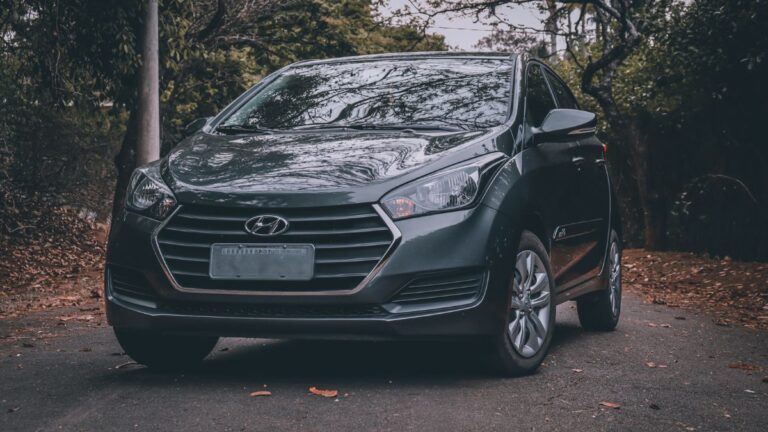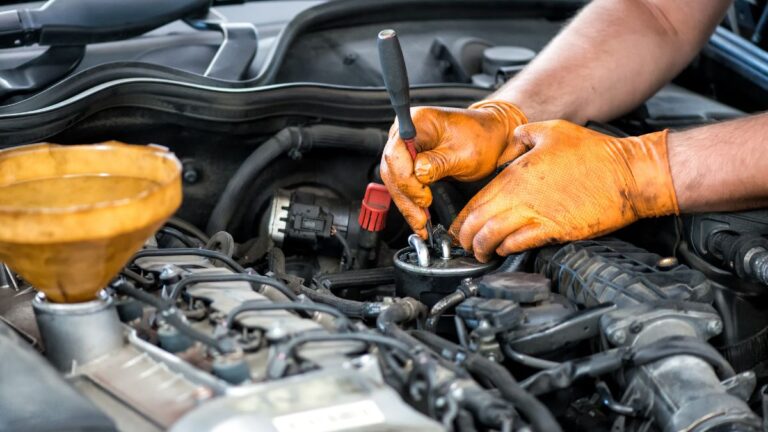So you’ve been checking out compact SUVs lately and the Mazda CX-5 has caught your eye. It looks good, drives well and has that premium feel — but in a market full of Toyota RAV4s, Honda CR-Vs and Subaru Foresters, does it really stand out?
Let’s break it down — from pricing to features to how it performs on Kenyan roads. And yes, we’ll throw in some real-life experiences to give you the full picture.
Quick Overview: What You Need to Know
- Model: 2024 Mazda CX-5
- Engine Options:
- 2.5L Naturally Aspirated (187 hp)
- 2.5L Turbocharged (up to 256 hp)
- Drive Type: Standard All-Wheel Drive (AWD)
- Fuel Economy: Approx. 9.0 to 10.7 L/100km (city/highway)
- Price in Kenya:
- Around KSh 5.9 million for the 2024 model
- Between KSh 3.1M and KSh 5.7M for used imports from 2018–2023
Premium Feel on a Budget
You step into the CX-5 and boom — soft-touch materials, leather seats and a clean layout. This is not your typical budget SUV. The dashboard design is minimalist but elegant and the controls are exactly where you want them.
Real-Life Feedback:
“I was torn between a German SUV and the CX-5,” says Angela, a corporate lawyer in Nairobi. “But once I sat in the Mazda, I didn’t feel like I was missing anything — it felt like luxury without the maintenance headache.”
The front seats are spacious and supportive — perfect for long drives to Naivasha or Nanyuki. The rear seats, however, might feel tight for taller adults, especially if the front seats are pushed all the way back.
Performance: Smooth and Fun to Drive
Let’s be honest — most SUVs are great for practicality but dull behind the wheel. Not the CX-5.Whether you’re navigating Nairobi’s potholes, overtaking on the highway to Eldoret or cruising through Limuru roads, the Mazda CX-5 feels planted and responsive. It’s got that “driver’s car” vibe — steering is precise and body roll is minimal for an SUV.
If you’re lucky enough to get the 2.5L turbocharged version, you’ll enjoy a powerful push that makes merging onto Thika Superhighway a breeze.
Driver Insight:
Peter, a car enthusiast from Rongai, said: “My turbo CX-5 beats most SUVs I’ve driven. It has muscle when I need it but still stays fuel efficient on long hauls.”
Safety: Smart and Assuring
Kenyan roads can be unpredictable. From sudden matatu stops to boda-boda surprises, safety is key.
The CX-5 comes with Mazda’s i-Activsense features, including:
- Adaptive Cruise Control
- Blind Spot Monitoring
- Lane Departure Warning
- Forward Collision Warning
These features aren’t just bells and whistles — they help you avoid accidents, especially in city driving.
Did You Know? Some Kenyan insurance companies now offer lower premiums for vehicles with advanced driver-assistance systems (ADAS). The CX-5 qualifies.
Space & Practicality: Where It Falls a Bit Short
Here’s the thing — if you have a big family or frequently haul cargo, you might find the CX-5 a little tight.
- Boot Space: It’s decent but smaller than the Toyota RAV4
- Rear Legroom: Can feel cramped, especially for taller passengers
Compare this to the Honda CR-V or Toyota Harrier, and you’ll notice those models are more generous with space.
Family Insight:
Carol, a mom of three in Kisumu, says: “I love the car’s look and drive, but during our shags trips, packing is a struggle. My husband wants to upgrade to a bigger SUV.”
If you’re mostly city-bound or traveling light, though, the CX-5 is more than enough.
Tech & Infotainment: Usable but Needs Polish
Let’s talk about the infotainment system.
Yes, it works. But the user interface feels like it belongs in 2020. The rotary knob system takes time to get used to, especially if you’re used to touchscreens.
- Apple CarPlay & Android Auto are available
- Sound quality is solid, especially in higher trims
- But navigation and controls can be… clunky
Still, once you learn the system, it’s reliable. It just doesn’t feel as intuitive as, say, the systems in a Toyota or Honda.
Reliability & Maintenance in Kenya
Mazda has a growing reputation for building reliable, long-lasting cars — and the CX-5 is no exception.
- Regular service intervals are affordable
- Spare parts are increasingly available in Nairobi, Mombasa, Kisumu, and even smaller towns
- Compared to a German luxury SUV? Way cheaper to maintain
Mechanic’s View:
Simon, a mechanic in Westlands, says: “I like Mazdas. They don’t break often, and when they do, they’re easier to fix than some of the high-tech German models.”
Value for Money in the Kenyan Market
Let’s be real — KSh 5.9 million for a new 2024 Mazda CX-5 isn’t pocket change. But when you compare it with other premium-feel compact SUVs, you start to see why buyers call it a sweet spot.
You’re getting:
- Near-luxury interior
- AWD standard (great for rural roads or muddy conditions)
- Great safety features
- Excellent driving experience
Used CX-5s from 2018–2022 are also a bargain for buyers on a tighter budget — especially those looking to import directly from Japan or the UK.
Final Verdict: Should You Buy the 2024 Mazda CX-5?
Go for it if you:
- Want a car that drives like a dream and looks stylish
- Prefer a premium interior without breaking the bank
- Appreciate safety, reliability, and lower maintenance costs
- Mostly drive in the city or short trips with occasional countryside drives
Consider alternatives if you:
- Need more rear legroom or bigger boot space
- Prefer touchscreens over control knobs
- Want a hybrid or fully electric SUV (the CX-5 is petrol only)
Bottom Line
The 2024 Mazda CX-5 is a sweet spot of luxury, practicality and driving fun — all packaged in a body that looks good on Kenyan roads.
It may not have the biggest boot or the most tech, but for drivers who want comfort, confidence and quality, this SUV is worth your money.
